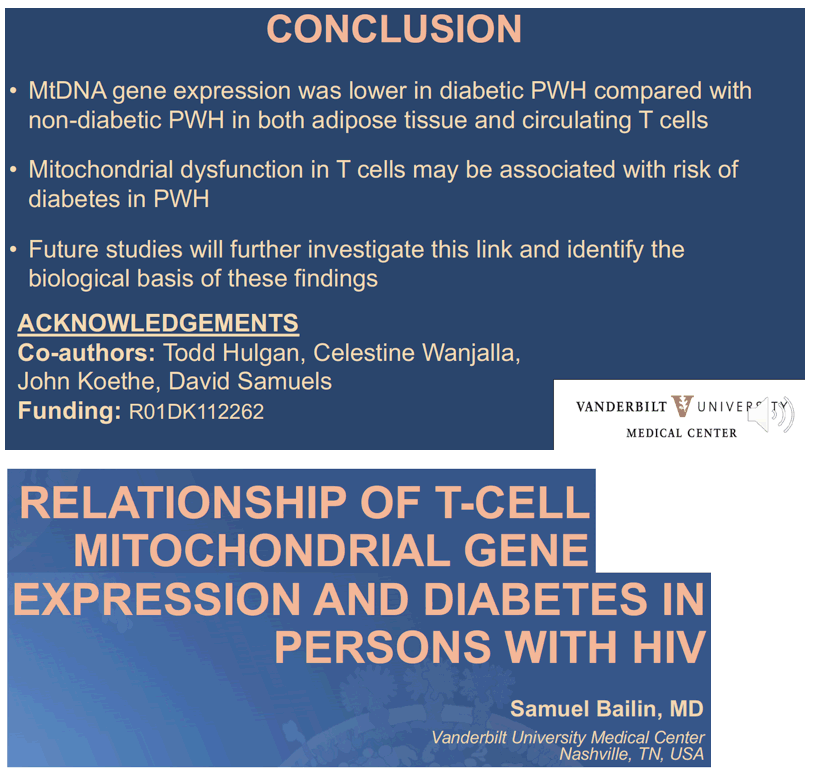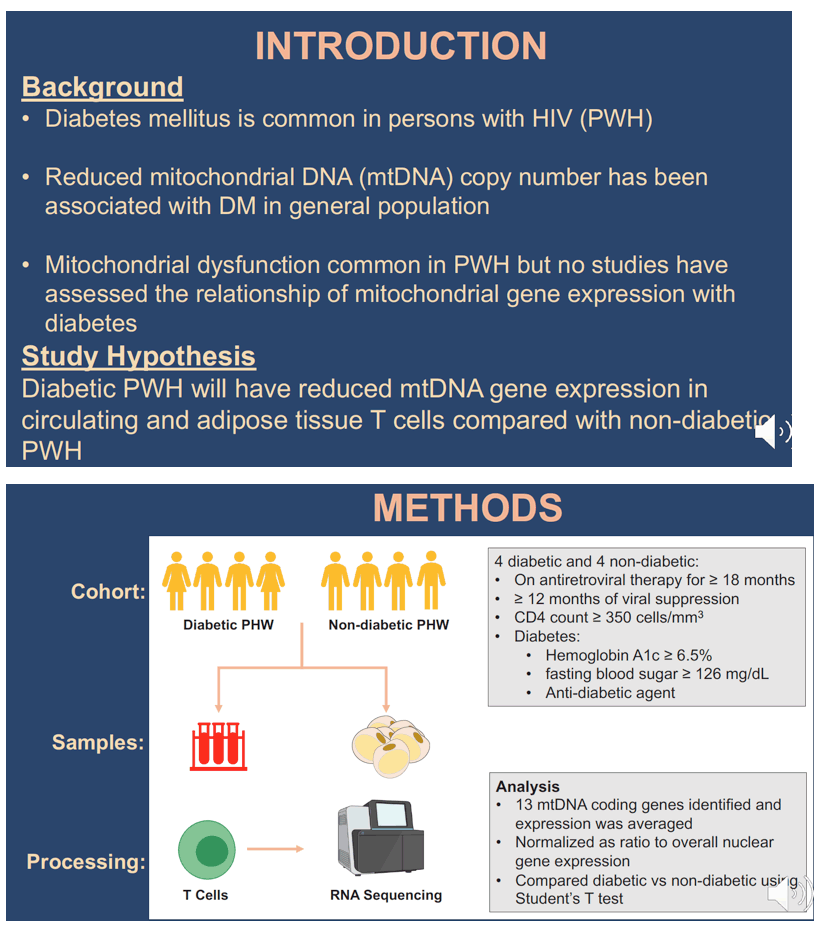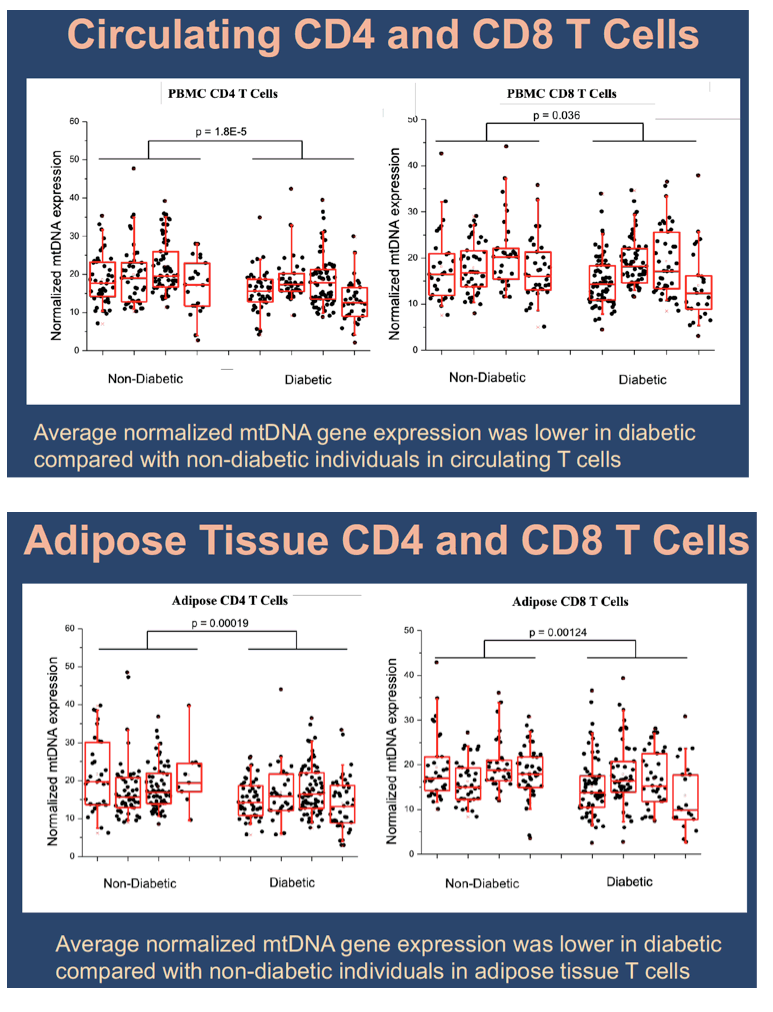 |
 |
 |
| |
RELATIONSHIP OF T-CELL MITOCHONDRIAL GENE EXPRESSION AND DIABETES IN PERSONS WITH HIV
|
| |
| |
CROI March 6-10 Reported by Jules Levin
Samuel Bailin1, Todd Hulgan1, Celestine Wanjalla1, John Koethe1, David Samuels2 1Vanderbilt University Medical Center, Nashville, TN, USA, 2Vanderbilt University, Nashville, TN, USA
Background: Metabolic diseases including type 2 diabetes mellitus (T2DM) are common in persons living with HIV (PLWH). Studies have found reduced mitochondrial DNA (mtDNA) copy number in peripheral blood mononuclear cells (PBMCs) is associated with T2DM in the general population. Single cell RNA sequencing (scRNA-seq) offers a promising method to study mtDNA expression at the cellular level. We hypothesized that PLWH and T2DM will have reduced mtDNA gene expression in T cells from PBMC and adipose tissue compared with PLWH without T2DM.
Methods: Four diabetic and 4 non-diabetic PLWH from a larger cohort who were on antiretroviral therapy for at least 18 months with viral suppression (<50 copies/mL) for at least 12 months underwent PBMC collection and subcutaneous abdominal tissue liposuction. Samples were stained and underwent flow cytometry for phenotyping and single cell sorting. Well-specific barcodes were used to generate single-cell cDNA libraries followed by 3' and 5' amplification. Paired-end reads were sequenced using Illumina NextSeq and reads were then aligned to the GRCh38 human reference genome. Thirteen mtDNA coding genes were identified and average gene expression was calculated and normalized as a ratio of overall gene expression. Normalized mtDNA expression in diabetics was compared with non-diabetics using the Student's t-test in PBMC and adipose tissue separately.
Results: Diabetic and non-diabetic individuals did not differ significantly by age or body mass index. The average normalized mtDNA expression was lower among individuals with T2DM compared with individuals without T2DM in CD4+ (16.8 vs 19.9; p<0.001; Figure 1A) and CD8+ (17.0 vs 18.5; p=0.04; Figure 1B) T cells from PBMC. Similarly, in subcutaneous abdominal tissue mtDNA expression was lower among individuals with T2DM compared with individuals without T2DM in CD4+ (16.1 vs 19.0; p<0.001; Figure 1C) and CD8+ (16.0 vs 18.4; p<0.001; Figure 1D) T cells. Average mtDNA expression in CD8 and CD4 T cells was highly correlated across all individuals in PBMCs (R2=0.86, p=8.8E-4) and in adipose tissue (R2=0.66, p=0.014).
Conclusion: PLWH who have T2DM have reduced single cell mtDNA gene expression compared to those without T2DM in both circulating and subcutaneous adipose tissue CD4+ and CD8+ T cells. We use scRNA-seq to show an important link between mtDNA expression and T2DM. Future studies with longitudinal follow up and larger sample sizes are needed to confirm these findings.



|
| |
|
 |
 |
|
|